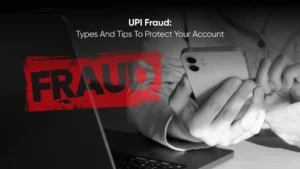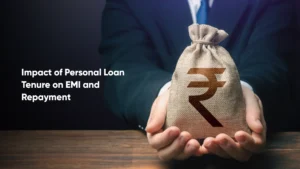When you’re hunting for the perfect personal loan, you usually look at interest rates, EMIs, and tenure. But did you know many lenders sneak in extra costs that you might miss. From processing fees quietly tacked onto your principal to legal & paperwork charges, these extra charges can bump up your monthly EMI or even drag out your repayment period.
In this post, we’ll dive into what these hidden fees are, why they exist, and how you can spot and dodge them, so you know exactly what to ask before you sign.
Table of Contents
ToggleWhat Are Hidden Charges in Personal Loans?
Hidden charges in personal loan agreements are fees that aren’t highlighted in the headline interest rate or EMI calculation. These include costs such as personal loan processing fees, stamp duty, and administrative expenses that lenders may roll into your loan principal. Even tiny fees can push up your EMI and add to the total interest you pay. Always read the fine print to see the full cost of credit. This ensures you understand exactly how much you repay.
Why Do Lenders Apply These Charges?
Lenders apply personal loan hidden fees to cover their processing and risk costs without raising headline interest rates. By splitting costs into separate charges, they keep advertised interest rates attractive.
- Processing Fees: Cover credit checks and application handling.
- Legal & Stamp Duty: Pay government and legal expenses.
- Administrative Charges: Handle documentation and loan servicing.
This approach helps banks manage operational costs while presenting competitive interest rates. Always factor these extra costs into your budget to get a clear picture of your true repayment commitment.
Common Hidden Charges to Watch Out For in Personal Loan
Processing Fee Addition
Lenders typically charge a processing fee from 0.5% – 2% of your loan amount. Instead of collecting it upfront, they often roll this fee into your principal, which means your EMI goes up from day one.
Stamp Duty & Legal Charges
You also pay state-mandated stamp duty (usually between ₹200 and ₹1,000) and any lawyer or legal fees the lender incurs. These costs may be quietly added to your loan balance, increasing both your EMI and the overall interest you owe.
Documentation/Admin Charges
To cover the cost of checking and maintaining your paperwork, lenders impose flat documentation or administrative fees, often ranging from ₹500 to ₹1,500. When financed, these charges add to your principal and, in turn, your monthly payments.
Prepayment & Foreclosure Charges
Some lenders levy a prepayment or foreclosure penalty if you clear your loan early, though many floating-rate loans waive this fee. Always check your lender’s waiver policy, as that can help you waive off these charges. This can help you shorten your tenure and save on interest.
Late Payment & Bounce Penalties
Missed an EMI or your check bounces? You could face a bounce fee of ₹500 – ₹1,000 plus an additional 1% – 2% interest on the overdue amount. If penalties pile up, you may even need extra months to finish repaying your loan.
Each of these fees, no matter how small, adds to your total borrowing cost. Before you sign, ask your lender for a detailed fee breakdown so you do not have to face any hidden charges.
Also Read: Pre Closure Charges for Personal Loan
How to Identify Hidden Charges on Personal Loan?
Spotting hidden charges in personal loan documents takes careful review. Follow these steps to catch them early:
- Request a Detailed Fee Schedule: Ask the lender for a full list of all fees, not just interest rates.
- Read the Loan Agreement End-to-End: Look beyond the EMI schedule. Check clauses on prepayment, late payment, and servicing.
- Compare CIBIL Statements: Ensure all financed fees match your application details.
- Use an EMI Calculator with All Inputs: Input the loan amount, interest rate, processing fee, and any known admin charges to see the actual EMI and tenure impact.
By following these steps, you’ll identify any personal loan hidden charges and understand their impact on your EMI and tenure.
Note: Lenders must disclose all fees under RBI guidelines. If any charge seems missing or unclear, raise the question before you sign.
How to Avoid Hidden Charges on Personal Loan?
Hidden charges like processing fees, late payments, and penalties can strain your finances. To avoid these extra costs, follow these simple steps:
- Read carefully: Always read the loan or service agreement, including any additional charges.
- Ask questions: If something is unclear, ask the lender or provider to explain.
- Compare offers: Check different lenders and check their interest rates, charges and overall cost as well.
- Be aware of common fees: Look out for late payment charges, prepayment penalties, or ATM withdrawal fees.
- Plan payments: Set reminders to pay on time and avoid penalties.
- Keep a buffer: Maintain extra money in your account to avoid overdraft charges.
- Negotiate with lender: Try to reduce or remove certain fees by negotiating wherever possible by speaking to your lender.
- Use in-network ATMs: Stick to your bank’s ATMs to avoid extra charges.
- Check your statements: Review your bank and loan statements regularly.
Being informed and proactive can help you avoid hidden charges and manage your money wisely. A proactive approach will help you steer clear of unexpected costs and keep your loan affordable throughout the tenure.
How to Make Personal Loan More Affordable?
Want to pay less interest on your loan? Follow these simple tips to save money and repay faster:
1. Keep a Good Credit Score
Pay your EMIs and bills on time. Use only a small part of your credit limit. Check your credit report often to fix any mistakes. A good CIBIL score helps you get lower interest rates.
2. Compare Before You Apply
Don’t go with the first lender. Compare interest rates, processing fees, and other charges from different banks and NBFCs. Even a 0.5% difference can save you thousands.
3. Pick a Shorter Tenure (If You Can)
Long tenures mean lower EMIs, but more interest. If you can afford it, choose a shorter tenure to clear your loan faster and save on interest.
4. Look Out for Special Offers
During festivals or special tie-ups, lenders may offer lower rates or waive processing fees. Check if your bank gives better deals to salary account holders.
5. Use Pre-Approved Loan Offers
If your bank offers you a pre-approved loan, you may get faster approval, fewer documents, and lower charges.
6. Say No to Unwanted Add-Ons
Avoid extra services like loan insurance or premium courier unless you really need them. These just increase your EMIs.
7. Take a Loan Against Fixed Deposit
If you have a fixed deposit or investment, use it to get a secured loan. These loans usually have lower interest rates and help you save more.
Conclusion
Hidden charges in personal loans can increase your EMI and make you repay for a longer time without you even noticing. But when you know what these charges are and why lenders apply them, you can avoid surprises. Always check and compare fees before choosing a lender. Try to negotiate on charges like processing fees or prepayment penalties. Most importantly, choose lenders who are open and clear about all costs. With the right information, you can get a loan that fits your budget and keeps your EMIs manageable.
Frequently Asked Questions
Are There Any Charges On A Personal Loan?
Yes, personal loans often include processing fees, interest, late payment charges, and sometimes prepayment or foreclosure charges.
What Are The Hidden Charges In A Personal Loan?
Hidden charges may include documentation fees, GST on services, prepayment penalties, bounce charges, or annual maintenance fees.
How Can I Avoid Paying Unnecessary Loan Fees?
Always read the loan agreement, ask for a complete fee breakdown, and avoid defaults or frequent prepayments without checking for penalties.
Are Prepayment Or Foreclosure Charges Legal In India?
Yes, but only for fixed-rate personal loans; for floating-rate loans to individuals, RBI has barred foreclosure charges.
What Happens If I Delay A Personal Loan EMI?
You may be charged a late fee, and it can impact your credit score negatively.
What Are 5 Penal Charges In Loan Accounts?
The 5 penal charges in loan accounts include:
1. Late payment fee,
2. EMI bounce charge,
3. Prepayment penalty,
4. Foreclosure charge and
5. Legal or collection charges









